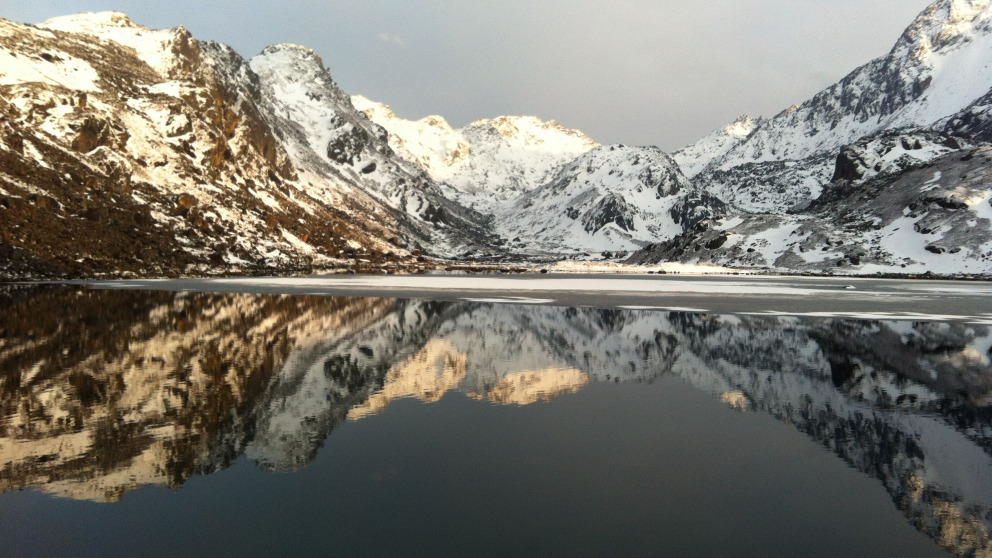Headline:
An Unexpected Encounter in the Himalayas… with an Atmospheric Brown Cloud

On a May morning in 2012, while hiking up the Himalayas, I saw an ABC – an Atmospheric Brown Cloud – linger in the air. Two Nepali colleagues and myself were on a field expedition, about to reach our research station for air quality monitoring at Gosaikunda (4,300 m.a.s.l.), which we reached after a 3-day walk along steep, narrow and very beautiful trails. The weather was favourable, dry, not too cold and calm. We were looking forward to seeing the sunrise along the white mountain peaks after having slept in a stone hut near the holy lake of Gosaikunda. To our surprise, after creeping up the last part of the mountain trail to reach the peak early in the morning, we could hardly see the snow-covered giants. They looked grey instead of shiny and golden: a dark layer of air extending all the way from northern India to the Greater Himalayas stretched as far as the eye could see (see the short movie and picture below).

The view in the above photo and articles by Mark Lawrence and Veerabhadran Ramanathan were great motivators for my PhD research at the Institute for Tibetan Plateau Research, Chinese Academy of Sciences. In addition to the direct measurements taken in the Himalayas and on the Tibetan Plateau, I analysed the available, yet sparse data from satellites and other research projects that could show the physical and chemical properties of the atmosphere. It soon became evident that what we had seen from Gosaikunda was an ABC, a huge blanket or layers of haze composed to a large extent of light-absorbing, carbonaceous aerosol particles. The small size of these pollution particles allows them to remain suspended in the air and be transported over long distances. Under certain atmospheric circulation patterns, heavy pollution events occur with ABCs crossing the sensitive region of the Himalayas and reaching the Tibetan Plateau (HTP), as we described here.
The HTP region represents a key area that hosts the largest volume of ice outside the polar regions and regulates radiative budgets and climate at a regional to global scale. In recent years, a growing body of research has demonstrated that the HTP atmosphere and cryosphere are undergoing extraordinary changes, including atmospheric warming and to a large extent rapid glacier melt (up to 50 m/year). Consequently, the seasonal water availability of important Asian river systems is very likely to be affected. In addition to greenhouse gases, increasing ambient concentrations of black carbon appear to be an anthropogenic driving force in these remote regions. Once deposited on glaciers and snow fields, these light-absorbing aerosol particles contribute to atmospheric heating and albedo reduction.
If pollution in the HTP region continues to increase over the years, it is very likely that the fragile, high-altitude regions will undergo non-reversible changes. Thus, it is vital that we take action and implement projects and regulations in order to control pollution emissions as a matter of urgency. Moreover, a great solution to environmental problems might lie in the behavioural patterns of each and every one of us; if severe pollution is created by a lack of awareness and non-sustainable actions, then an increase in conscious and sustainable practices is needed to overcome the problem. Thus the question is whether or not mindsets of connectedness and compassion are likely to enhance sustainability and bring success on local to global scales. A friend from Tibet once told me that Western civilisation has brought great material progress. Yet, the modern world would be much more advanced if there was a technique for inner peace as well. If there is no inner transformations and inner growth, we will become cogs of a machine and slaves of the outer world.
Header photo: Zoe Lucia Lüthi

Add new comment